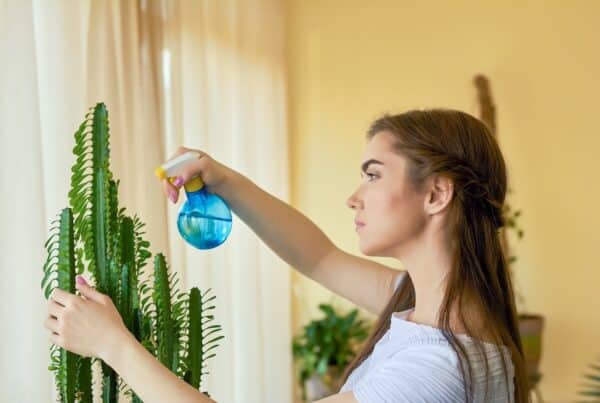
A mysterious pool around your furnace can instantly turn a mundane day into a nerve-racking puzzle. What’s gone wrong? Why is my furnace leaking water? This common yet perplexing condition can escalate if not addressed promptly, potentially leading to costly damages.
Many things can cause this issue, ranging from simple condensation leaks to more serious and localized complications. In this article, we’ll go over various potential causes, as well as maintenance and preventative steps.
Understanding Your Furnace System
Think of your furnace as the heart of your heating system, silently and efficiently keeping your space warm. At its core, a furnace burns fuel (typically gas or oil) to produce heat. This heat then warms up the air that’s circulated throughout your home.
However, high-efficiency condensingsing furnace furnaces produce water as a byproduct of their heating process. These high-performing furnaces cool the exhaust gases to extract as much heat as possible, which results in condensation. This condensed water is typically drained away safely.
But if a problem arises with the drainage or other furnace components, this water might start leaking out, causing the puzzling puddle you’re trying to decipher.

Common Causes of a Leaking Furnace
Once you have a basic idea of furnace behavior, it can be a bit easier to understand potential issues that cause leaking water. Let’s look at some of the most likely culprits:
Condensation Leak
The first suspect on our list is a condensation leak. High-efficiency furnaces, known in the industry as condensing furnaces, pride themselves on wringing out every bit of heat from the exhaust gases, a process that results in condensation. Typically, the system directs this condensation safely through a drain. However, if damage or blockages impede this escape route, the condensation can leak out and pool around your furnace.
Plumbing Leak
In some cases, the guilty party might not be your furnace at all, but a nearby plumbing imposter. Leaking pipes in the vicinity of your furnace can masquerade as a furnace leak. Hence, it’s crucial to scrutinize the surrounding plumbing for any telltale signs of leaking or damage.
Secondary Heat Exchanger Leak
For less efficient furnaces (those operating at 80% efficiency or below), condensation isn’t typically the issue. If such a furnace is leaking, it could indicate a serious problem with the secondary heat exchanger – a problem that often signals the end of your furnace’s lifespan.
Humidifier Leak
Some furnaces come equipped with a built-in humidifier that adds moisture to the warm air circulated throughout your home. If this component goes rogue, it could cause water to leak from your furnace.
Each of these issues calls for a unique solution strategy. In the next section, we’ll walk you through the critical steps for identifying the source of the leak and where to go from there.
How to Address a Furnace Leaking Water
Now that we’ve explored the likely culprits, let’s delve into the practical steps you can take to identify and address the source of your furnace leak.
Investigating a Condensation Leak
If you have a high-efficiency furnace, start by checking the condensation drain for blockages or damage. You can attempt to clear minor blockages yourself, but if the damage is significant, it’s best to call in a professional.
Examining the Surrounding Plumbing
Before blaming your furnace, make sure to inspect the nearby plumbing. If you find a leaky pipe, you’ll need to contact a plumber to repair or replace it.
Checking the Secondary Heat Exchanger
For older or less efficient furnaces, a leak might indicate a problem with the secondary heat exchanger. Since this component is integral to the furnace’s operation, a malfunction can signal that it’s time to replace the entire unit. An HVAC professional can perform a thorough inspection and give you the best course of action.
Inspecting the Built-In Humidifier
If your furnace has a built-in humidifier, check it for any signs of malfunction. A leaky humidifier can often be fixed by replacing a faulty valve or cleaning a blocked filter. However, in some cases, you may need to replace the entire humidifier unit.

Other Recommended Maintenance
To safeguard your furnace from potential leaks and keep it running at peak efficiency, a proactive approach to maintenance is key.
Start with an annual inspection by a certified HVAC technician. This preventative measure can catch minor issues before they become major ones, saving you time, money, and stress in the long run. These inspections should involve a comprehensive cleaning of your furnace to remove accumulated dust and debris, which can hinder performance and lead to overheating.
Your furnace system will have an air filter and, if a humidifier is built-in, a separate humidifier filter. Each filter plays a crucial role in ensuring the efficient operation of your furnace. Regular replacement of these filters is crucial. Typically, the furnace air filter should be replaced every three months, while the humidifier filter should be replaced or cleaned at least once per heating season.
Your furnace’s ventilation system also requires regular monitoring. Secure vent pipes and a well-maintained flue pipe can help prevent hazardous leaks, such as those involving carbon monoxide.
When to Call a Professional for a Furnace Leaking Water
If leaks persist even after your initial fixes, it’s time to consult an expert, as these could indicate a more complicated underlying issue. When you believe your less efficient furnace’s secondary heat exchanger has a problem, immediate professional intervention becomes essential. The risk of carbon monoxide release and inefficient operation make this a serious issue.
Should your furnace need complex repairs, such as replacing the humidifier unit or addressing noise, hiring a professional is a wise choice. These tasks require expertise, and improper handling could lead to further damage or safety risks.
Even when your furnace shows no signs of trouble, scheduling regular inspections with a professional is a good practice. Certified HVAC technicians can identify potential issues early, ensuring efficient furnace operation and extending its lifespan. Prioritize the longevity of your furnace and your safety.
Conclusion
When you’re faced with a furnace leaking water, it can feel like you’re trying to solve a complex puzzle. But with a basic understanding of your furnace system, a keen eye for common culprits, and the right troubleshooting steps, you can often find the source of the problem. Remember, preventive maintenance is your best defense against most furnace issues.
Regular inspections, filter replacements, and system checks can keep your furnace running efficiently and safely. And when the situation calls for it, don’t shy away from calling in the professionals.
If you need a thorough inspection of your furnace, HVAC system, or any other component of your home, don’t hesitate to reach out to the experts at Avalon Home Inspections today.






